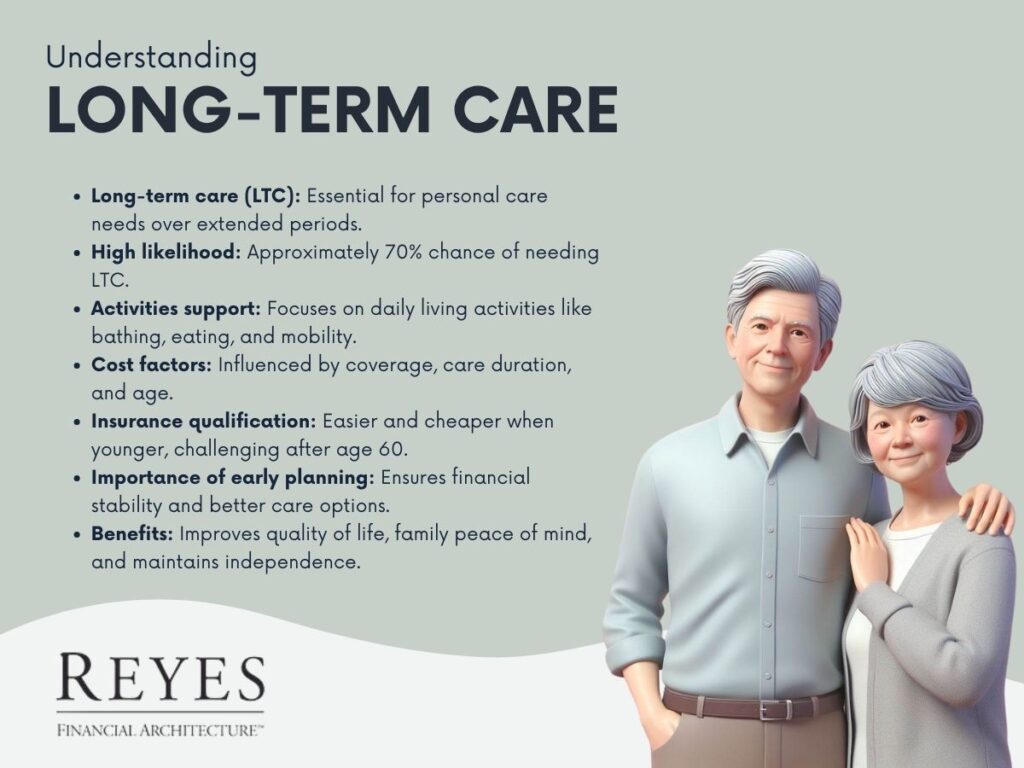https://youtu.be/tYioyLxbNTI
Take a minute to watch this video for important information on long-term care, a topic everyone needs to be ahead of.
Long-term care (LTC) is a critical aspect of health and personal care that affects a significant portion of the population. Statistics indicate a high probability—around 70%—that an individual or their spouse will require long-term care at some point. This statistic underscores the importance of understanding what long-term care entails, its costs, and how to prepare for it.

Long-term care refers to a variety of services and supports tailored to meet an individual’s personal care needs over an extended period. Contrary to common misconceptions, most long-term care is not medical in nature. Instead, it predominantly involves assistance with everyday activities crucial for daily living.
Activities of Daily Living, or ADLs, are fundamental tasks that most people perform daily without assistance. These include:
Instrumental Activities of Daily Living, or IADLs, are tasks that are somewhat more complex than ADLs and are essential for independent living. These include:
The cost of long-term care can vary significantly based on several factors:
The initial premium level for long-term care insurance tends to increase with the age of the applicant. Younger individuals typically face lower premiums, highlighting the advantage of planning for long-term care early.
Qualifying for long-term care insurance becomes more challenging with age. Statistics show that 1 in 4 applicants between the ages of 60 and 69 do not qualify for such insurance. This statistic is a stark reminder of the importance of early planning.
Given the high likelihood of needing long-term care and the associated challenges and costs, it is crucial to understand the options and prepare adequately. This preparation is not just a personal matter but also a significant consideration for families.
Understanding and preparing for long-term care is a critical aspect of life planning. Given the high probability of needing such care, it’s prudent to start planning early. This includes understanding what long-term care entails, evaluating insurance options, and considering personal and family needs. By taking proactive steps today, individuals can ensure they have the support and resources they need to maintain their quality of life and independence in the future.